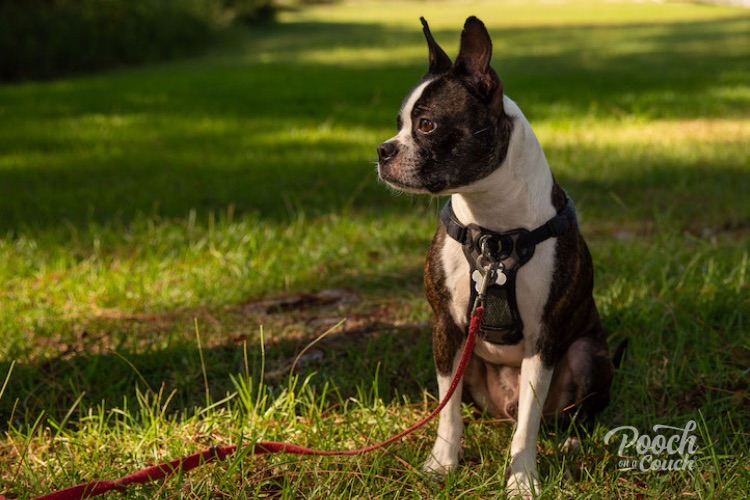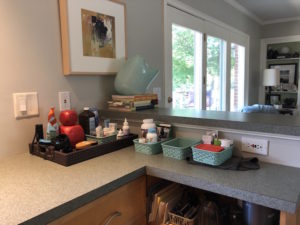“Your dog is heartworm positive. You need to start exercise restrictions today.”
What? What does that even mean? Your dog loves to go for long walks, play fetch, have morning zoomies and tussle with their canine pals.
And now your veterinarian just told you that for the next few months – or longer – you need to keep your dog’s heart rate at a normal level to prevent complications. Or worse.
How is that even possible?
I’ll tell you!
You can keep your active dog calm during heartworm treatment.
I’m not a veterinarian nor an animal behaviorist. I write what I’ve experienced and what I’ve learned from the literature. Always follow your veterinarian’s guidelines for your dog’s heartworm treatment. I hope you find this post useful.
The Problem With Ignoring Exercise Restriction During Heartworm Treatment
The primary reason your veterinarian and the American Heartworm Society want you to keep your active dog calm during heartworm treatment is to reduce complications and reduce permanent damage to your dog’s heart and lungs.
It is a simple but important message.
And, the more advanced the disease in your dog the tighter the restrictions. In fact, if your dog has advanced heartworm, you really need to follow your veterinarian’s guidelines above what I will share with you here if there is a conflict of information.
How Do I Know How Far Heartworm Disease Has Advanced In My Dog?
Your veterinarian should be able to tell you this. They can tell you a “stage” 1, 2, or 3 – the higher the number, the more advanced the disease.
Your vet “stages” your dog based on these diagnostics:
- a thorough physical exam
- a chest x-ray
- a complete blood count lab test
- a urinalysis
- further imaging
They may ask you some questions like: “Does your dog cough? When?” and “Are you noticing anything different about your dog? Fatigue? Reluctance to play?” and questions like that.
If you recently adopted your dog, you may not know the answers to these questions, but don’t worry. Your veterinarian can evaluate the disease progression anyway.
Exercise Restrictions – Begin With These 3 Steps
You know your dog best. You know what cranks them up and hopefully you know how to calm them back down. I certainly think that prevention is everything, and we can prevent our dogs from becoming excited. You CAN keep your active dog calm during heartworm treatment.
1. Write Down Your Dog’s Daily/Weekly Routine
Just like us, dogs often have a rhythm to the day. You may be able to identify the blocks of time your dog is calmer and when they are more active. This will help you plan for those more active periods.
Ask yourself: When does my dog usually play? When do they nap? What do they do after meals? What do they do first thing in the morning? Is my dog hyper? Why do I say that?
Make a weekly schedule and highlight those blocks of time your dog is more active and playful, and focus your initial planning on those times. If your dog usually asks to play fetch at 8:00 a.m., plan to replace that activity with something equally as tiring but much, much less active.
2. Re-Write The Rules Of The House
Most people have a multi-dog household. This can create a challenge when one of your dogs tests positive for heartworm and needs treatment while the other dog is healthy.
How do you tell one dog that they cannot play while the other pets have complete freedom?
You don’t.
Take it from me and my experience: when the entire household is following an exercise-restriction plan, the easier it is to keep your heartworm-positive dog’s activity low-key.
It really doesn’t take long to make the switch.
Do these things:
- Put up the toys. All of them. Out of sight, out of mind. You will use the toys in a more strategic manner during treatment.
- Stop the walks or change to shorter, slow, sniffing walks instead of brisk walking.
- Stop the obvious games of fetch and rigorous tug-of-war
Sounds brutal. I know.
However, when you take something away, replace it with something new and different. There is no reason your dogs all have to be miserable and bored while your heartworm-positive dog is undergoing treatment.
I do think it makes a difference when all dogs in the home have the same outlets – at least as understood by your heartworm-positive dog!
Trust me, if your heartworm-positive dog watches your other dogs play fetch in the yard while they are penned up inside, they will be upset, confused, and frustrated. It isn’t fair!
Do this instead!
- Take your pets on car rides separately – You can take your healthy dog to a new area for rigorous exercise without your heartworm-positive dog watching you leave out the front door for a walk.
If not a cause for anxiety, a car ride is a great low-key stimulating activity for your heartworm-positive dog. If you have others in your house that can help, you can have your healthy pets playing fetch while you take your heartworm-positive dog on that car ride. - Use low-key enrichment activities for all your dogs in the house. There are some incredible facebook groups that talk specifically about enrichment. There are too many ideas from those sources for me to include them in this post.
- Replace physical activity with mental activity. Provide the pets in your home with opportunities for training, self-soothing activities, and sniff-fests. Mental activity is just as tiring as physical activity.
3. Manage Your Space
Make your house smaller.
Making your house smaller will reduce those impulsive zoomies and chase games. It’s really hard for a dog to get into a sprint in a smaller room.
- Invest in baby gates. I use the ones with the walk-through door. When I have a heartworm-positive foster dog in my house, I have a total of seven of them in use!
- Make stairs inaccessible unless you are walking your leashed heartworm positive dog up or down the stairs. Stairs aren’t bad – running up and down a flight of stairs is not recommended while a dog is heartworm positive.
- Have your heartworm-positive dog drag a leash when you are giving them a little freedom indoors. That said, ALWAYS hold on to the leash when you are taking your dog out on a potty break. It only takes a second for a rabbit to shoot out from under a bush or a squirrel to run up a tree in the far corner of your yard.
- Upsize the crate. Or, invest in an exercise pen that you can set up inside. Give your dog more room than normal when they have to begin the crate-rest phase of treatment.
When your dog enters the injection phase of heartworm treatment, your veterinarian is more than likely going to tell you to put your dog on crate-rest. The injection phase is the riskiest part of the treatment and when complications are more apt to occur. - Depending upon the size of your dog, you should make some decisions about whether or not you will allow the dog to jump up and off of your furniture. Some dogs can do so without affecting their heart rate, some can’t. If you see your dog becoming excited and playful jumping up and down, redirect that activity quickly.
As an administrator of a rescue agency, I oversaw 100+ dogs through heartworm treatment. Most of the time when a complication occurred, it was because exercise restriction guidelines were not followed by the caretaker.
Final Thoughts…
- Do your best. You are caring for an animal that has no idea what is wrong, why they can’t be free and do all the things that they used to do. They do adjust to a low-key lifestyle. And it doesn’t take long, either.
- Don’t sweat a misstep. If your dog has one of those zoomie moments and it takes you a minute to get your dog under control, don’t sweat it. It has happened to me a time or two. I do what I can to adjust things, but beyond that, I have to remind myself that I am caring for a dog that just did something completely natural and normal.
- Be willing to use medication or calming supplements. I am not an expert on either, so I refer you to your veterinarian for guidance on the best options for your dog. We have many more options available to our dogs than we did a few years ago. You can use calming medications without completely gorking your dog.
Good Luck!
Most dogs sail through heartworm treatment. It feels like a long journey, but it flies by. Take it day by day, step by step, and stay in tune with your dog through the process. In no time those heartworms will be gone and your dog can return to a normal, active life.
More Reading
Why Heartworm Positive Dogs Should Not Exercise
Key Questions To Ask Your Veterinarian About Heartworm



